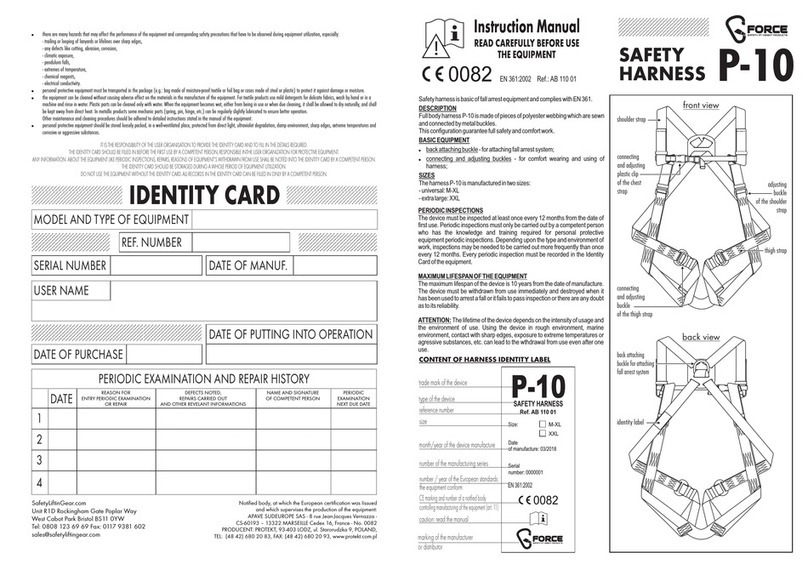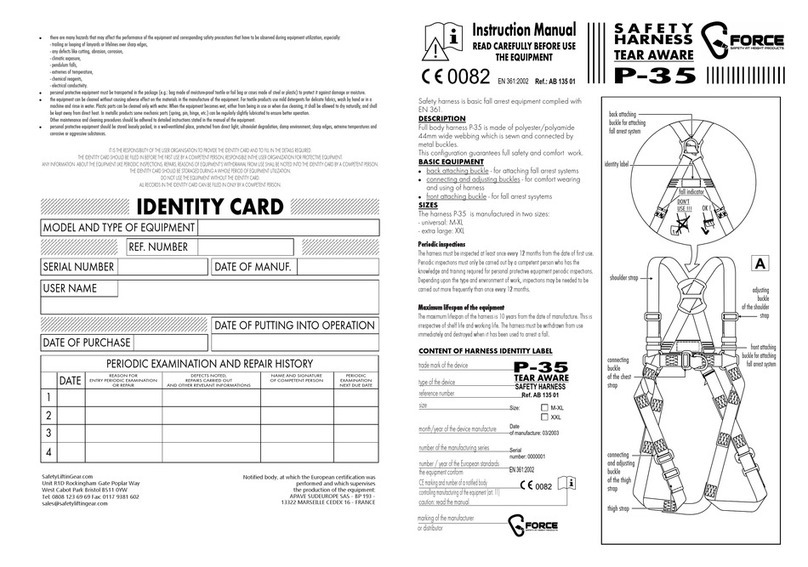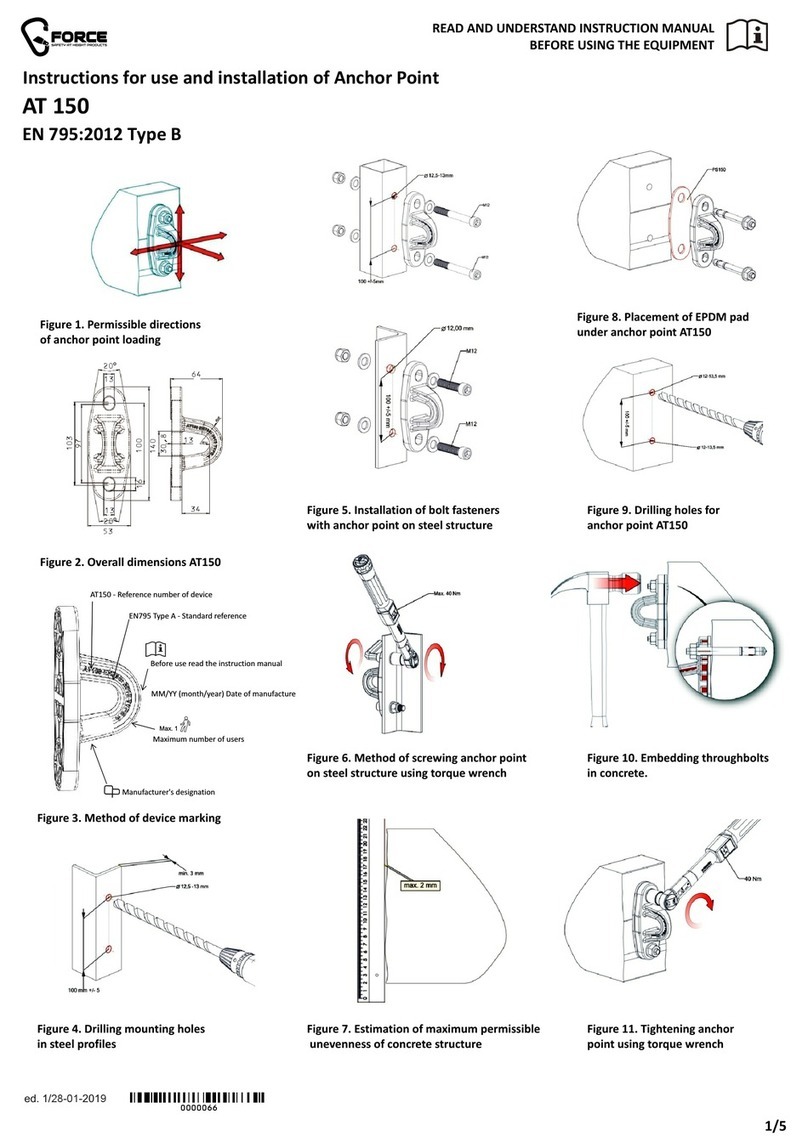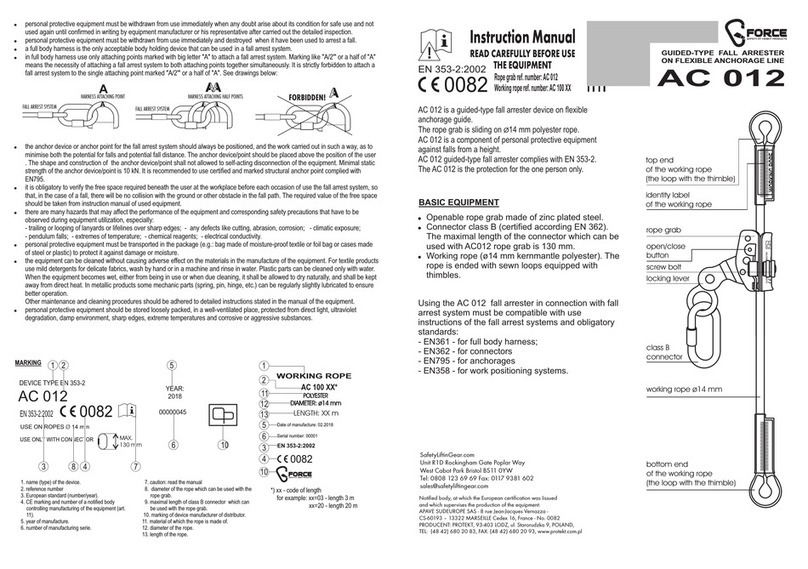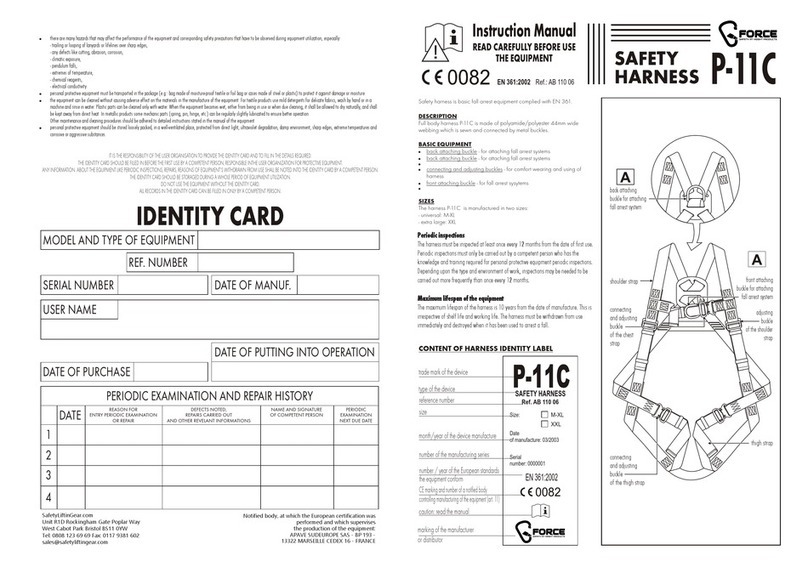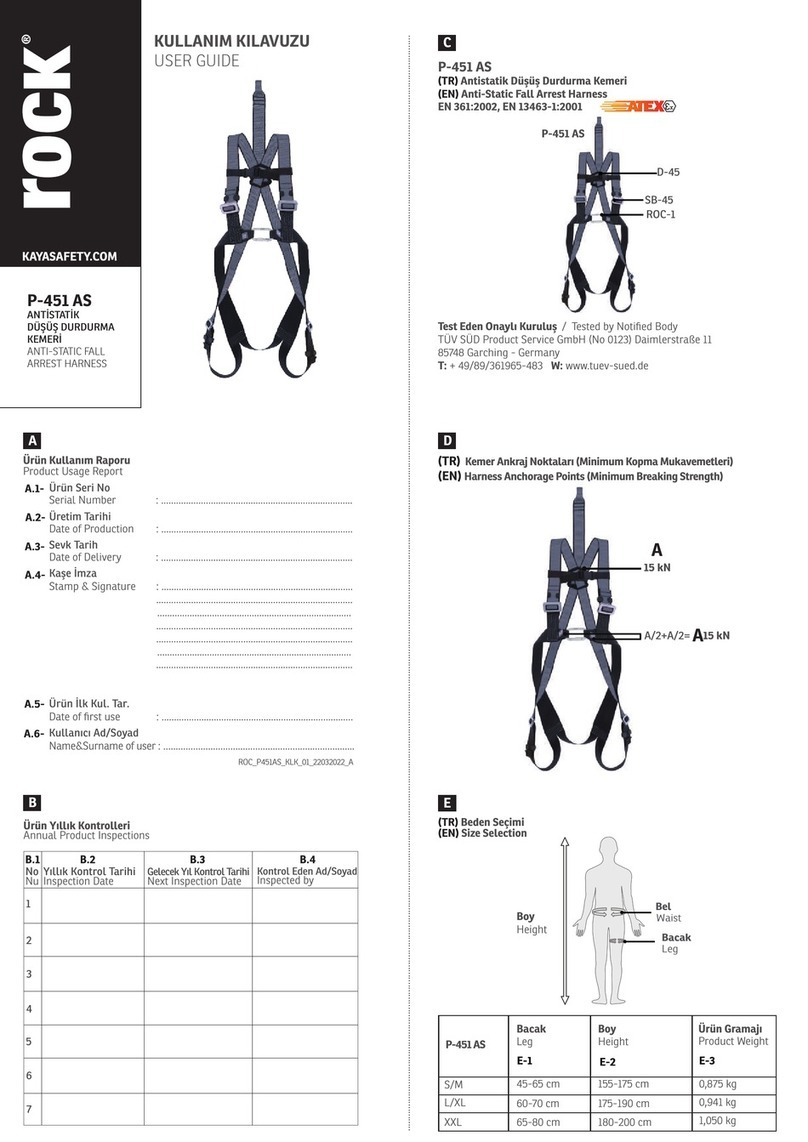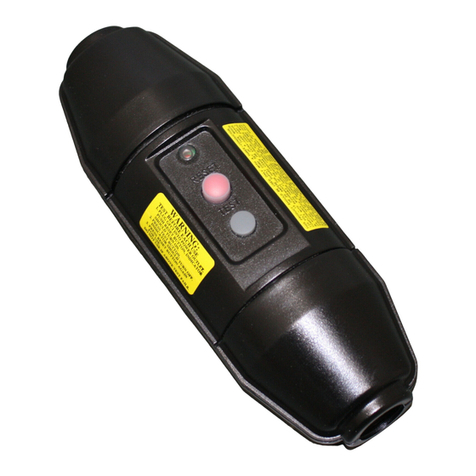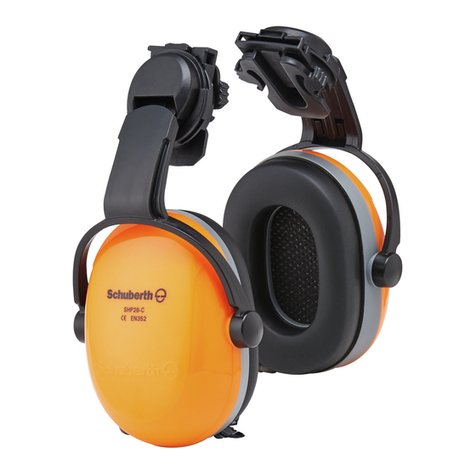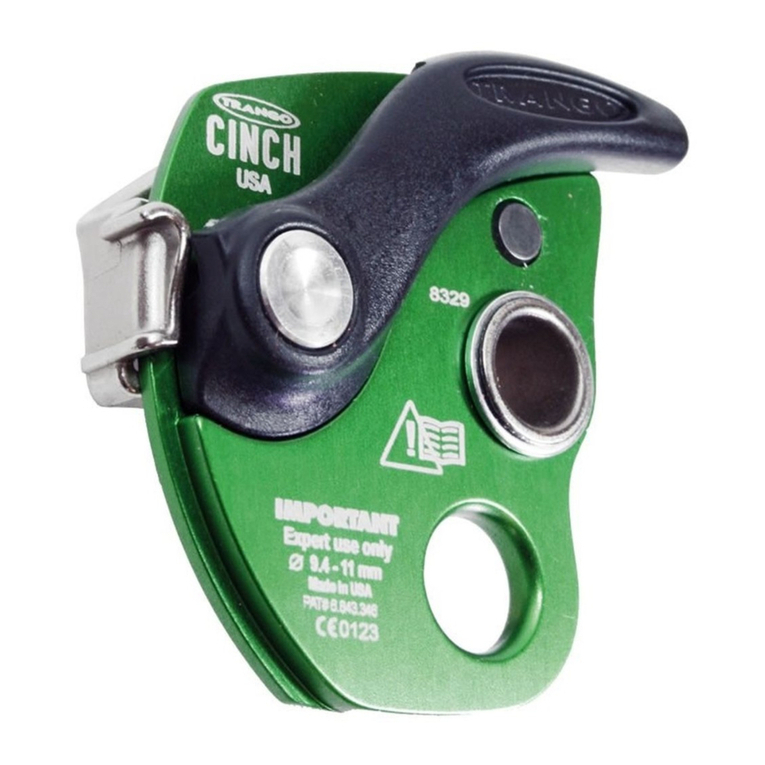
1 2 3
!the fall arrest system must be connected only to the attaching elements of the harness marked by capital letter A.
The fall arrest system must be connected only to:
- straight to the back attaching buckle.
or
- to the lengthening element of attaching buckle
or
- to both front attaching loops of the harness. It is strictly forbidden to attach a fall arrest system to a single loop.
The back attaching buckle is marked by a capital letter A - marked on the crossing plate with arrows indicating back attaching buckle (1).
Lengthening element is marked by a capital letter A placed on the label inside element loop(2) .
Front attaching loops are marked by a capital letter A (one half of letter is black and another half is marked by outline) placed on the label inside each
loop (3). See drawings below.
5
32 4
HOW TO PUT ON THE HARNESS
Harness is put on correctly if:
all straps are correctly adjusted (neither too loose nor too tight).
back attaching buckle is correctlypositioned at the level of the shoulder blades.
front chest strap is correctlypositioned at the middle of the chest.
the ends of the all straps must be kept by plastic loops.
Take the harness by the back attaching
buckle.
Put on the shoulder straps one after one,
take care do not twist them.
Connect front plastic clip and adjust
the tension the chest strap.
Pull one and then other thigh straps
through crottch, take care do not twist
them.
Shortening Lengthening
Adjusting the shoulder straps
Shortening
1
9
6
10
7
11
8
12
Connecting of the steel buckles of the thigh straps and work positioning belt
Adjusting the thigh straps and work positioning belt
Lengthening
ATTACHING FALL ARREST SYSTEM
!work positioning system could be attached only to the lateral buckles of the work positioning belt, and according
EN 358 - work positioning lanyard must be anchored to the point of construction that is situated at waist level or above. Work positioning lanyard
must be kept taut to restrict free movement to a maximum 0,5 m.
WARNING:
1) It is strictly forbidden to attach any fall arrest system to side buckle of work positioning belt.
2) It is strictly forbidden to attach any work positioning system to front attaching loops or back attaching buckle.
Using the harness in connection with personal protective equipment agains falls from a height must be compatible with manual instructions of this
equipment and obligatory standards:
- EN353-1, EN353-2, EN355, EN354, EN360 - for the fall arrest systems;
- EN 362 - for the connectors;
- EN 358 - for work positioning systems;
- EN 795 - for anchor devices.
·personal protective equipment shall only be used by a person trained and competent in its safe use.
·personal protective equipment must not be used by a person with medical condition that could affect the safety of the equipment user in normal and
emergency use.
·a rescue plan shall be in place to deal with any emergencies that could arise during the work.
·being suspended in PPE (e.g. arresting a fall), beware of suspension trauma symptoms.
·to avoid symptoms of suspention trauma, be sure that the proper rescue plan is ready for use. It is recommended to use foot straps.
·it is forbidden to make any alterations or additions to the equipment without the manufacturer's prior written consent.
·any repair shall only be carried out by equipment manufacturer or his certified representative.
·personal protective equipment shall not be used outside its limitations, or for any purpose other than that for which it is intended.
·personal protective equipment should be a personal issue item.
·before use ensure about the compatibility of items of equipment assembled into a fall arrest system. Periodically check connecting and adjusting of the
equipment components to avoid accidental loosening or disconnecting of the components.
·it is forbidden to use combinations of items of equipment in which the safe function of any one item is affected by or interferes with the safe function of
another.
·before each use of personal protective equipment it is obligatory to carry out a pre-use check of the equipment, to ensure that it is in a serviceable
condition and operates correctly before it is used.
·during pre-use check it is necessary to inspect all elements of the equipment in respect of any damages, excessive wear, corrosion, abrasion, cutting or
incorrect acting, especially take into consideration:
- in full body harnesses and belts - buckles, adjusting elements, attaching points, webbings, seams, loops;
- in energy absorbers - attaching loops, webbing, seams, casing, connectors;
- in textile lanyards or lifelines or guidelines - rope, loops, thimbles, connectors, adjusting element, splices;
- in steel lanyards or lifelines or guidelines - cable, wires, clips, ferrules, loops, thimbles, connectors, adjusting elements;
- in retractable fall arresters - cable or webbing, retractor and brake proper acting, casing, energy absorber, connector;
- in guided type fall arresters - body of the fall arrester, sliding function, locking gear acting, rivets and screws, connector, energy absorber;
- in connectors - main body, rivets, gate, locking gear acting.
·after every12 months of utilization, personal protective equipment must be withdrawn from use to carry out periodical detailed inspection. The periodic
inspection must be carried out by a competent person for periodic inspection. The periodic inspection can be carried out also by the manufacturer or his
authorized representative.
·In case of some types of the complex equipment e.g. some types of retractable fall arresters the annual inspection can be carried out only by the
manufacturer or his authorized representative.
·regular periodic inspections are the essential for equipment maintenance and the safety of the users which depends upon the continued efficiency and
durability of the equipment.
·during periodic inspection it is necessary to check the legibility of the equipment marking.
·it is essential for the safety of the user that if the product is re-sold outside the original country of destination the reseller shall provide instructions for use,
for maintenance, for periodic examination and for repair in language of the country in which the product is to be used.
·personal protective equipment must be withdrawn from use immediately when any doubt arise about its condition for safe use and not used again until
confirmed in writing by equipment manufacturer or his representative after carried out the detailed inspection.
·personal protective equipment must be withdrawn from use immediately and destroyed (or another procedures shall be introduced according detailed
instruction from equipment manual) when it have been used to arrest a fall.
THE ESSENTIAL PRINCIPLES FOR USERS OF PERSONAL PROTECTIVE EQUIPMENT AGAINST FALLS FROM A HEIGHT







